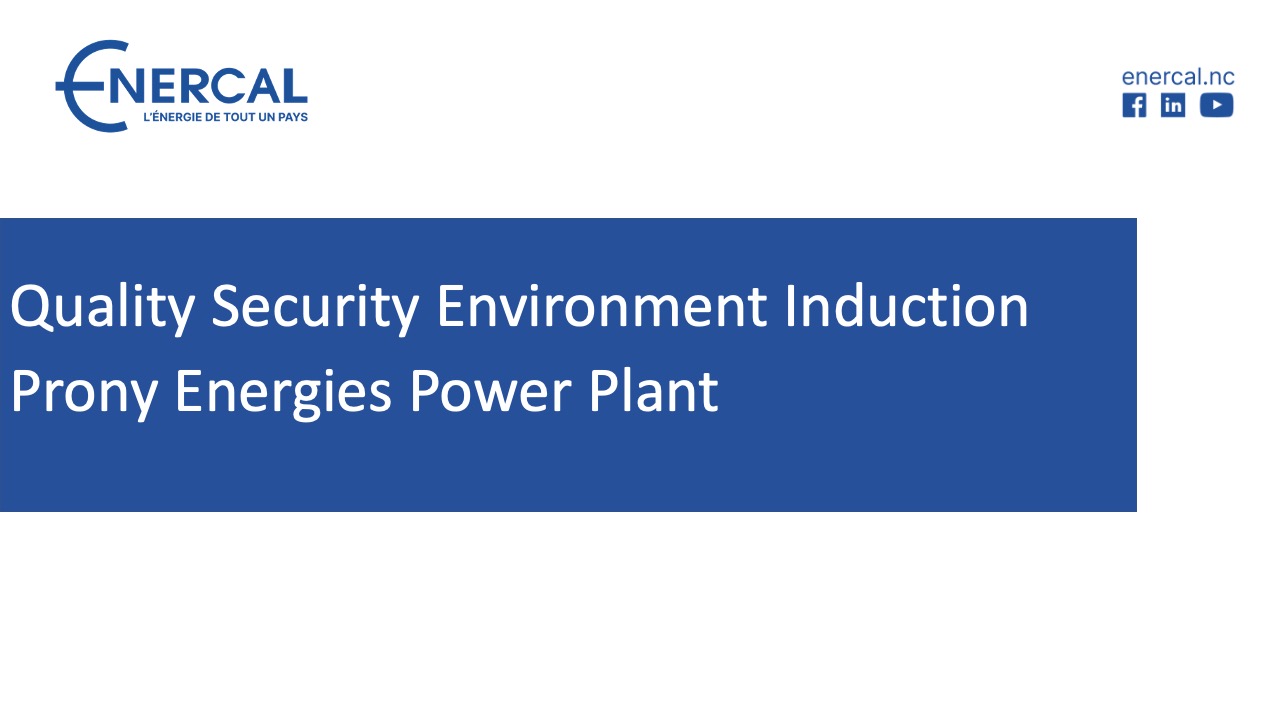
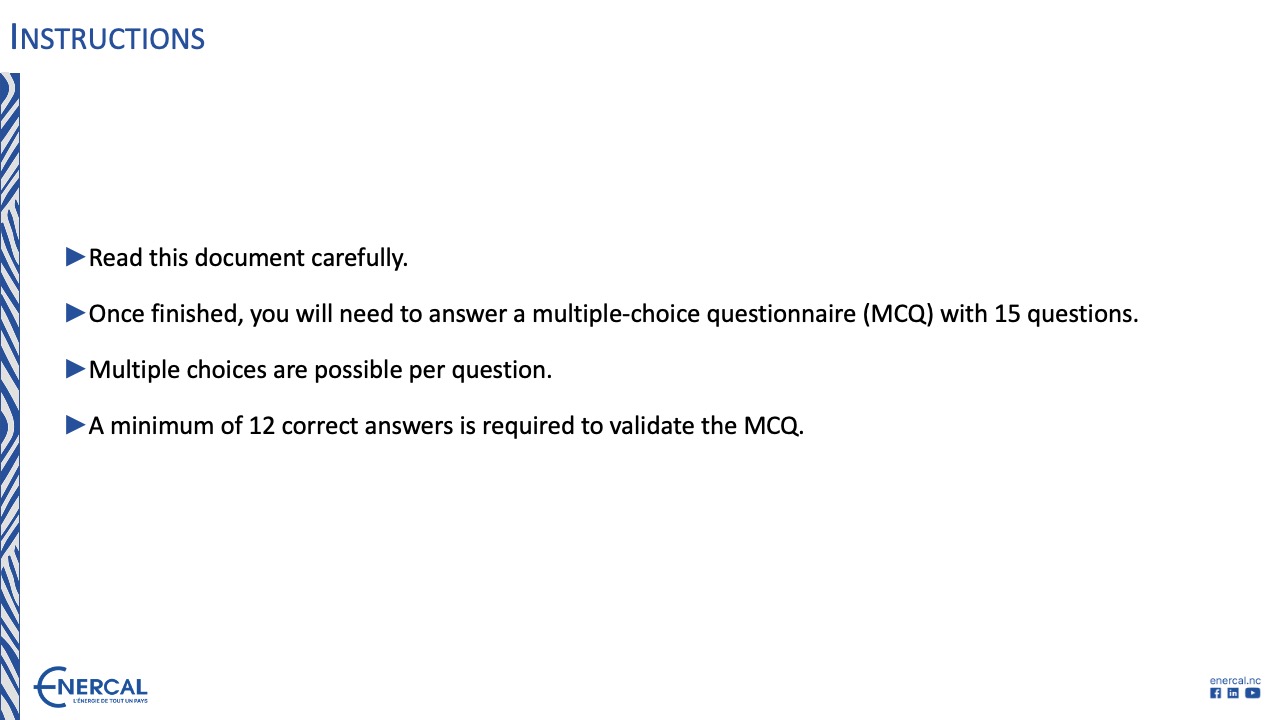
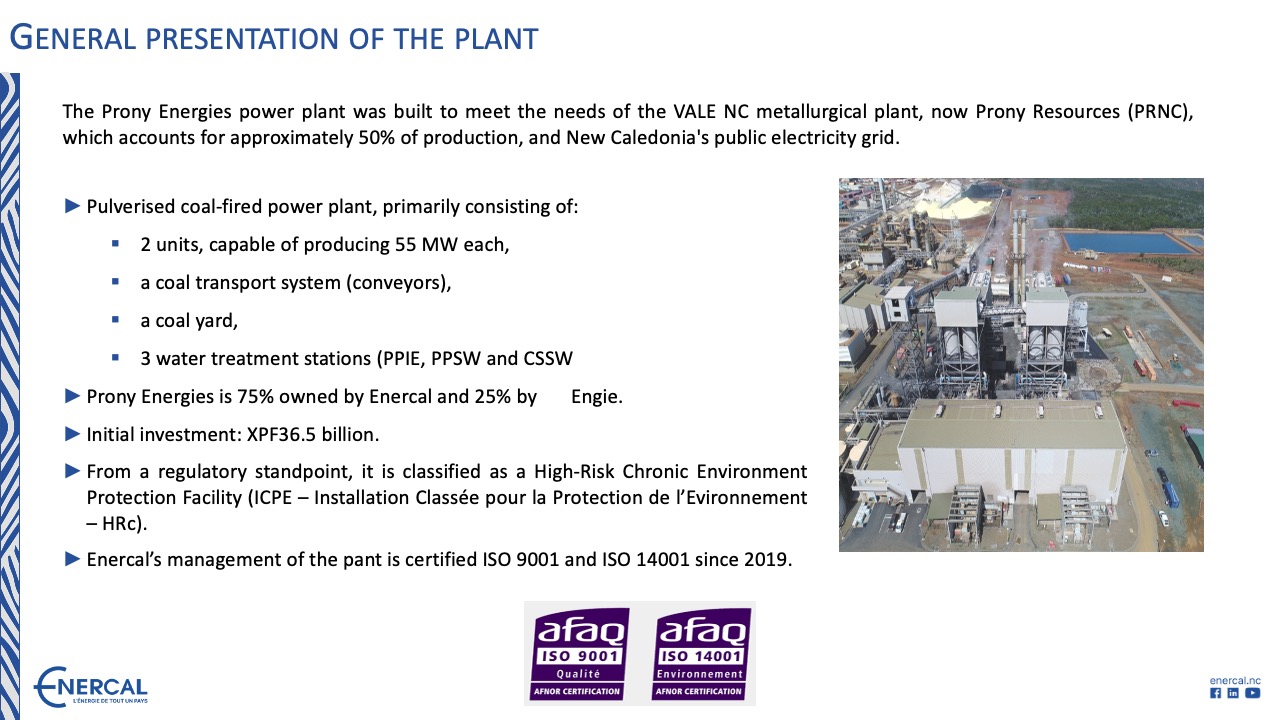
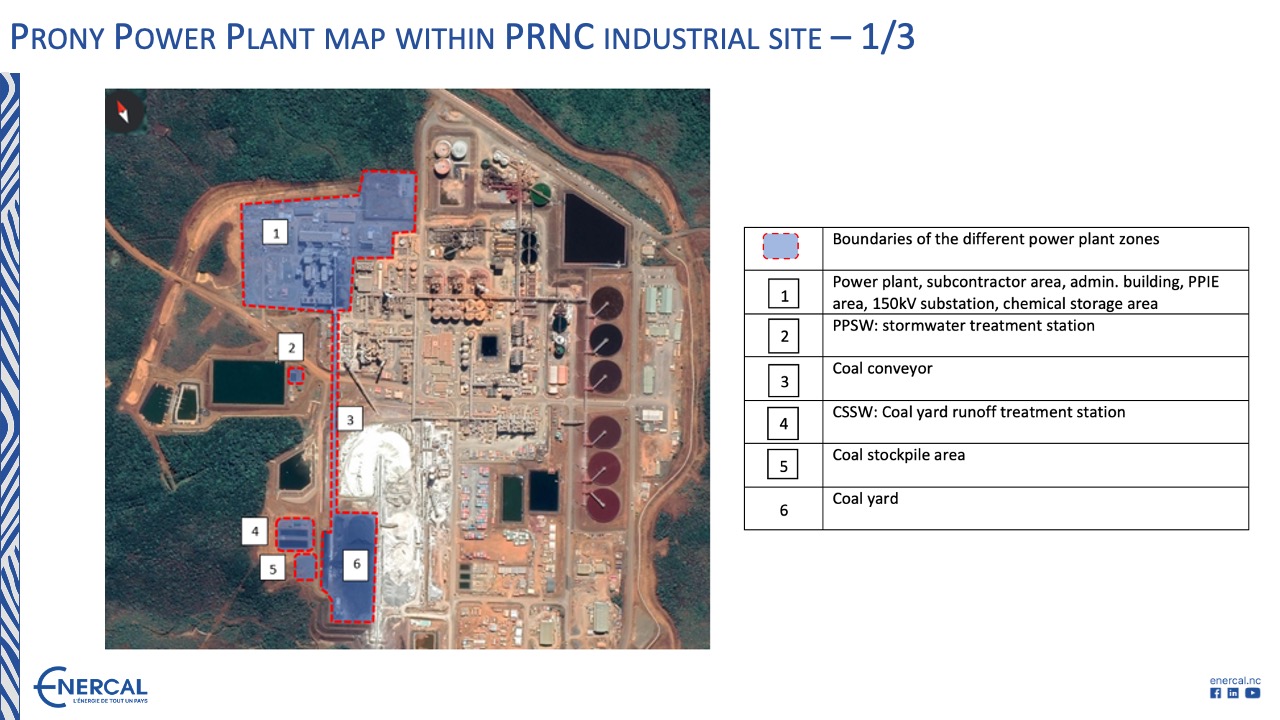
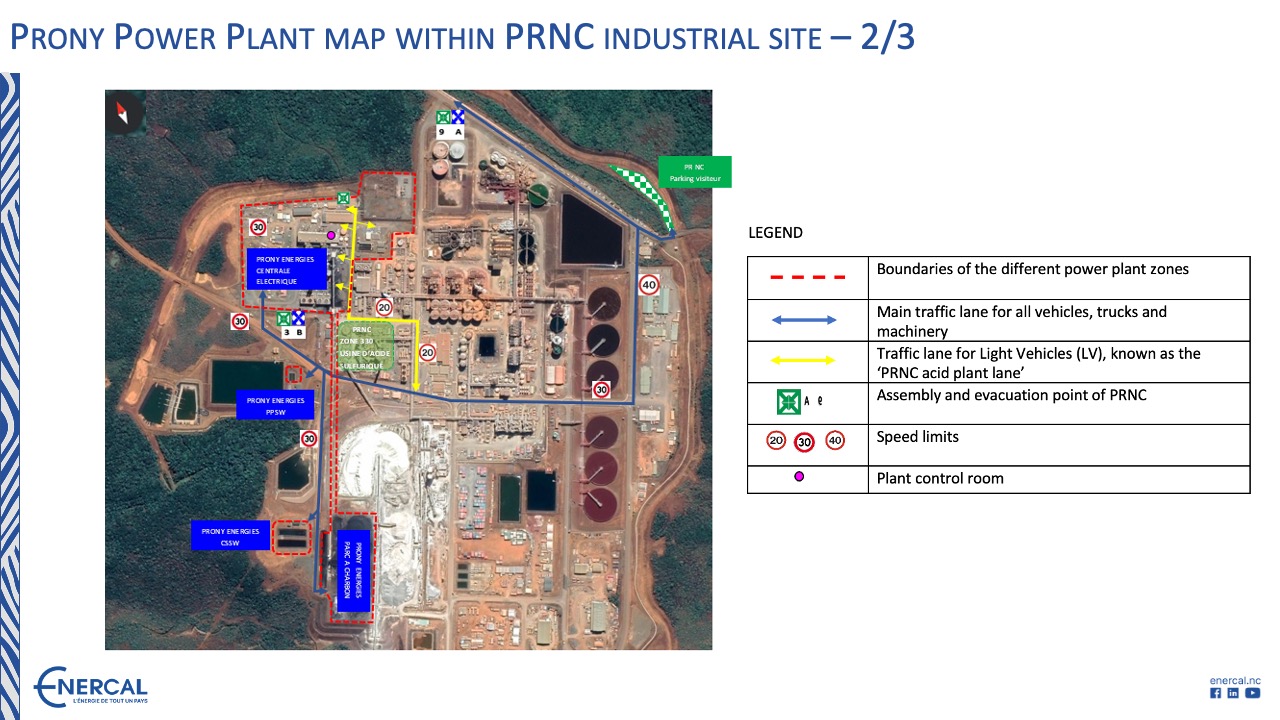
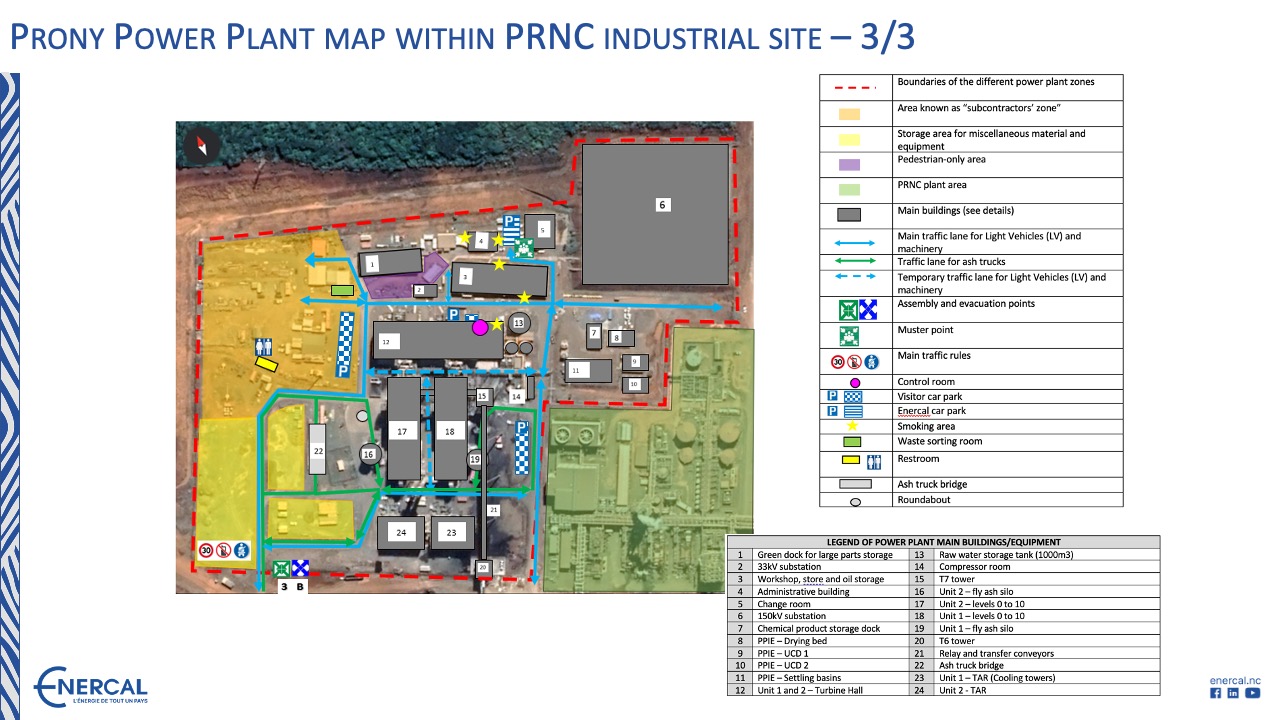
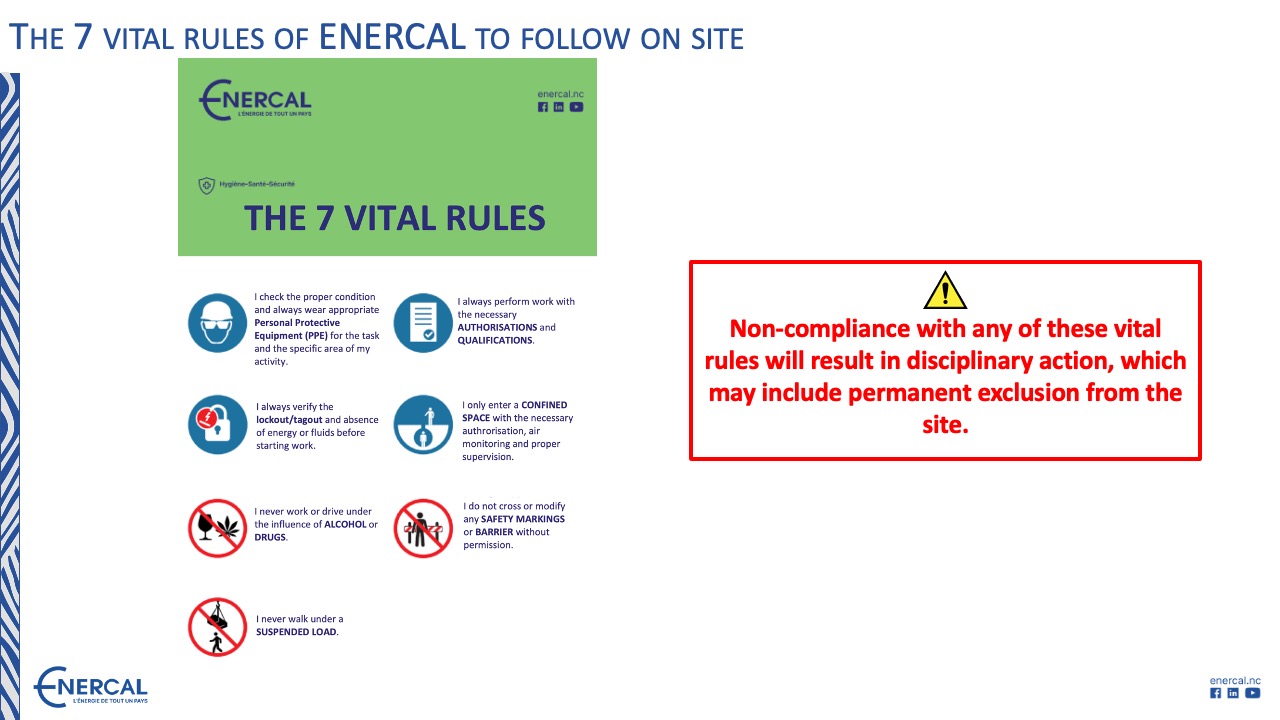
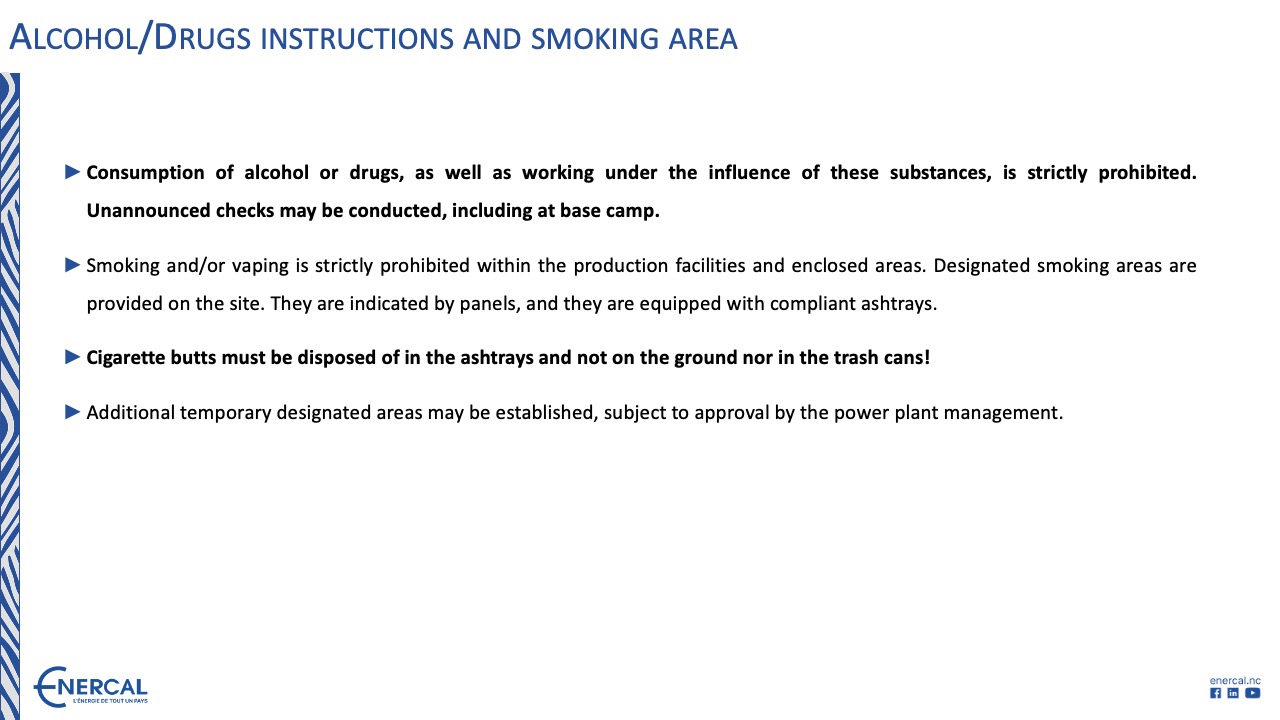
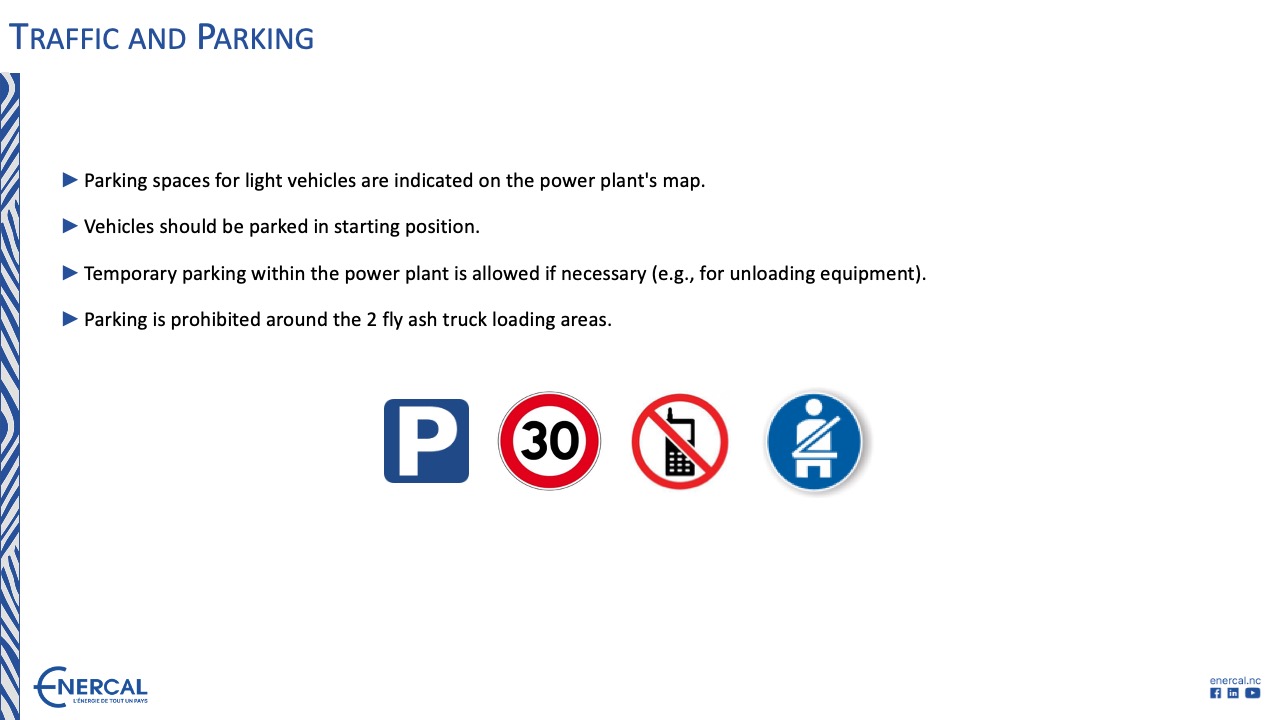
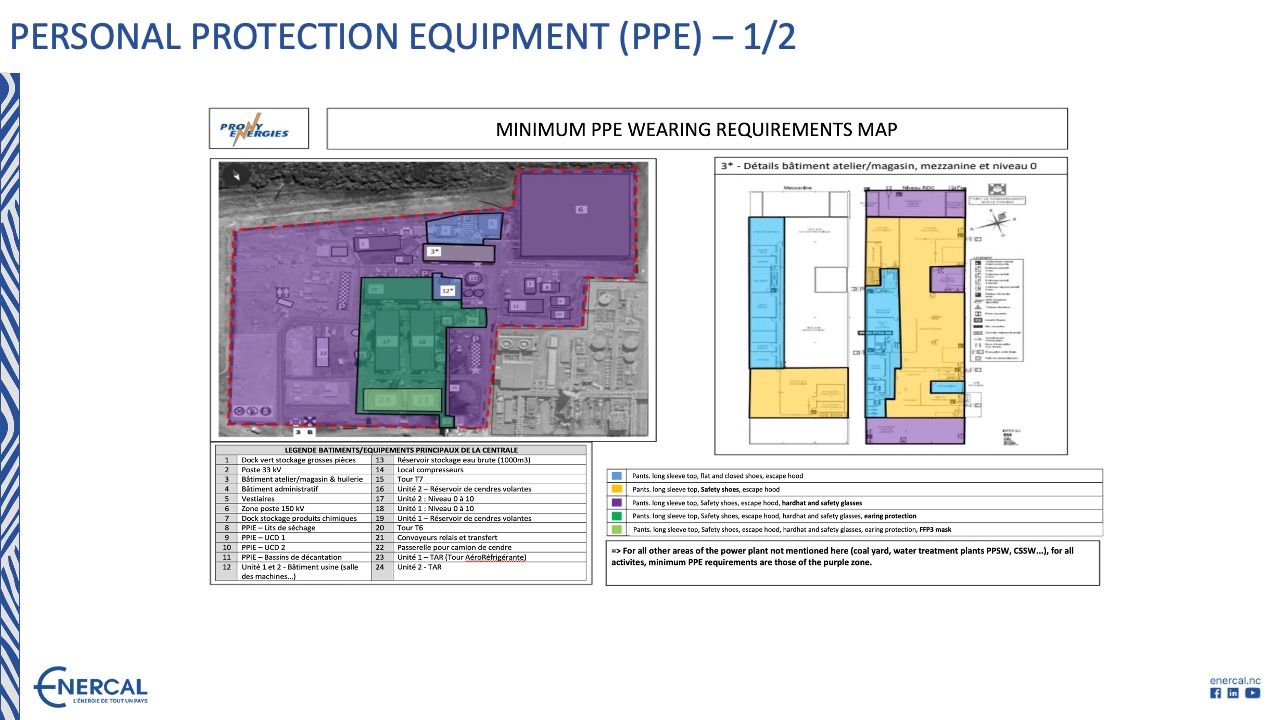
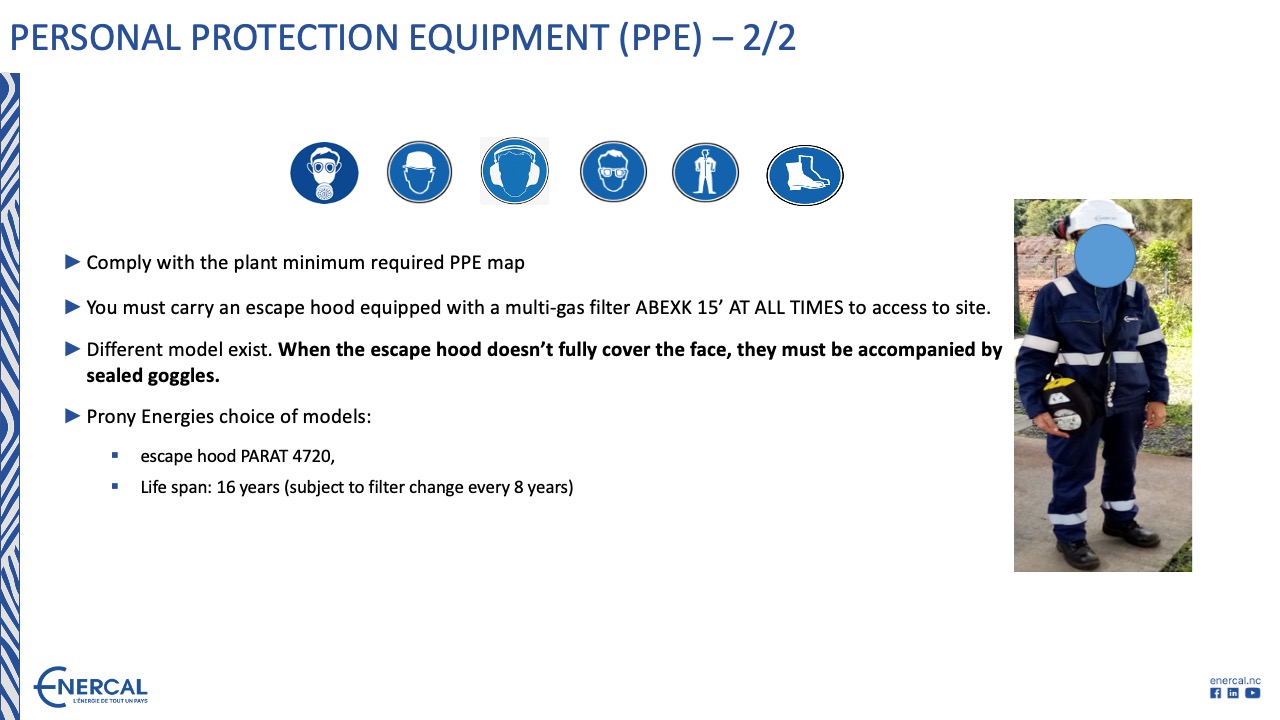
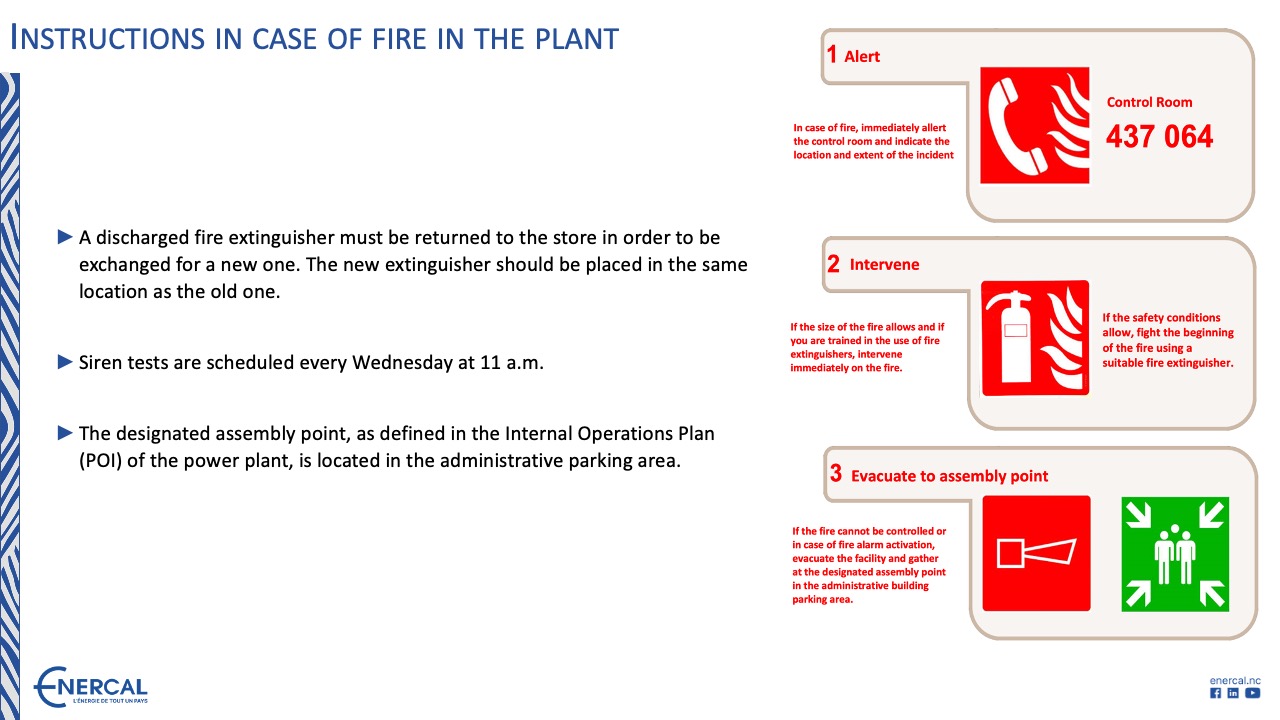
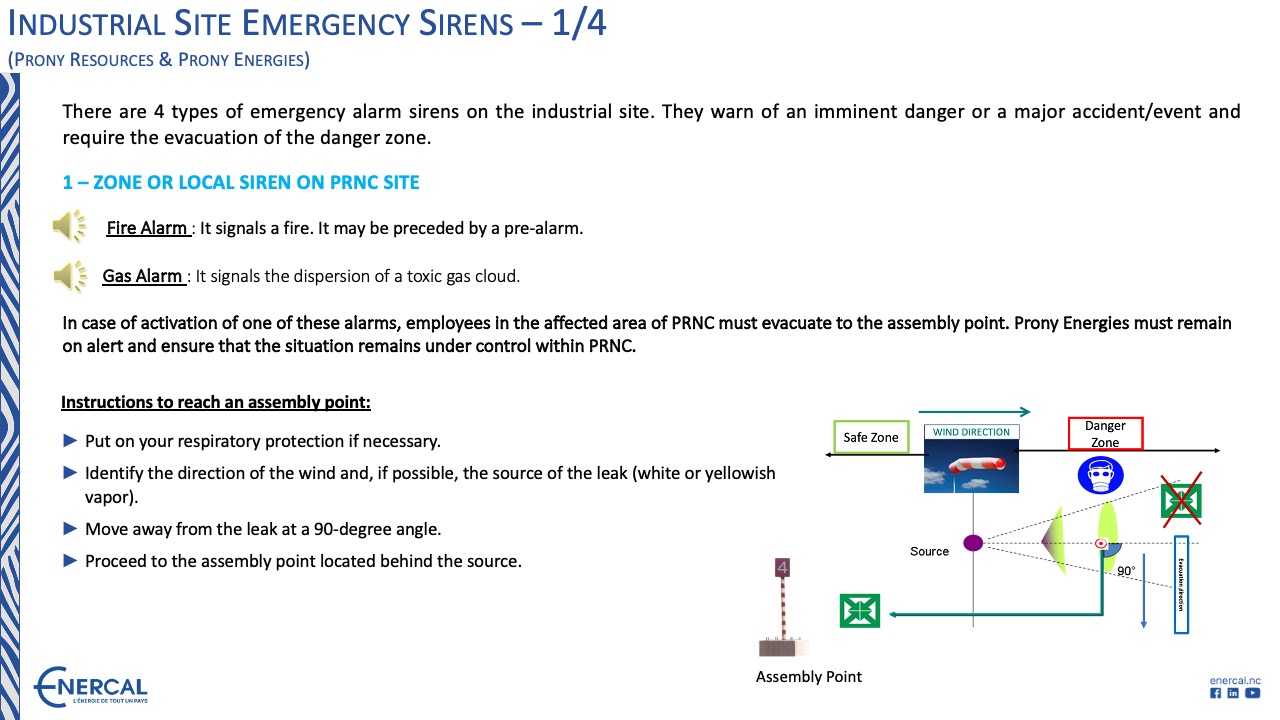
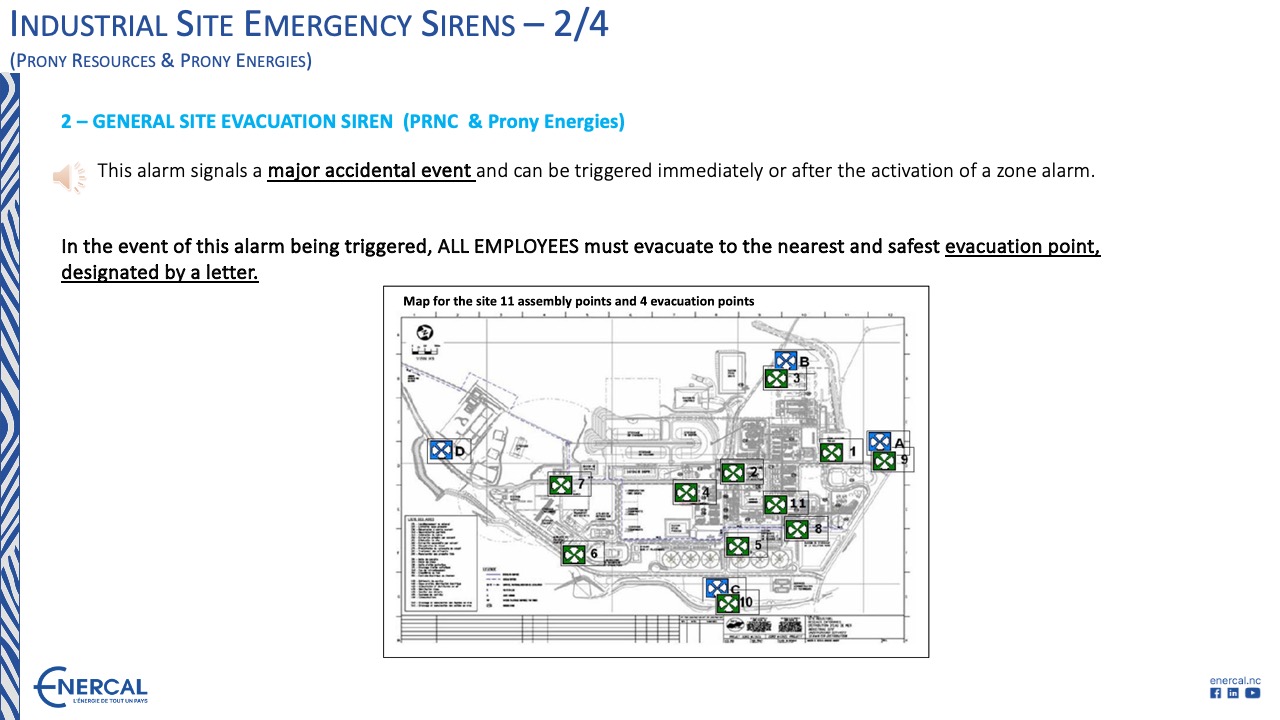
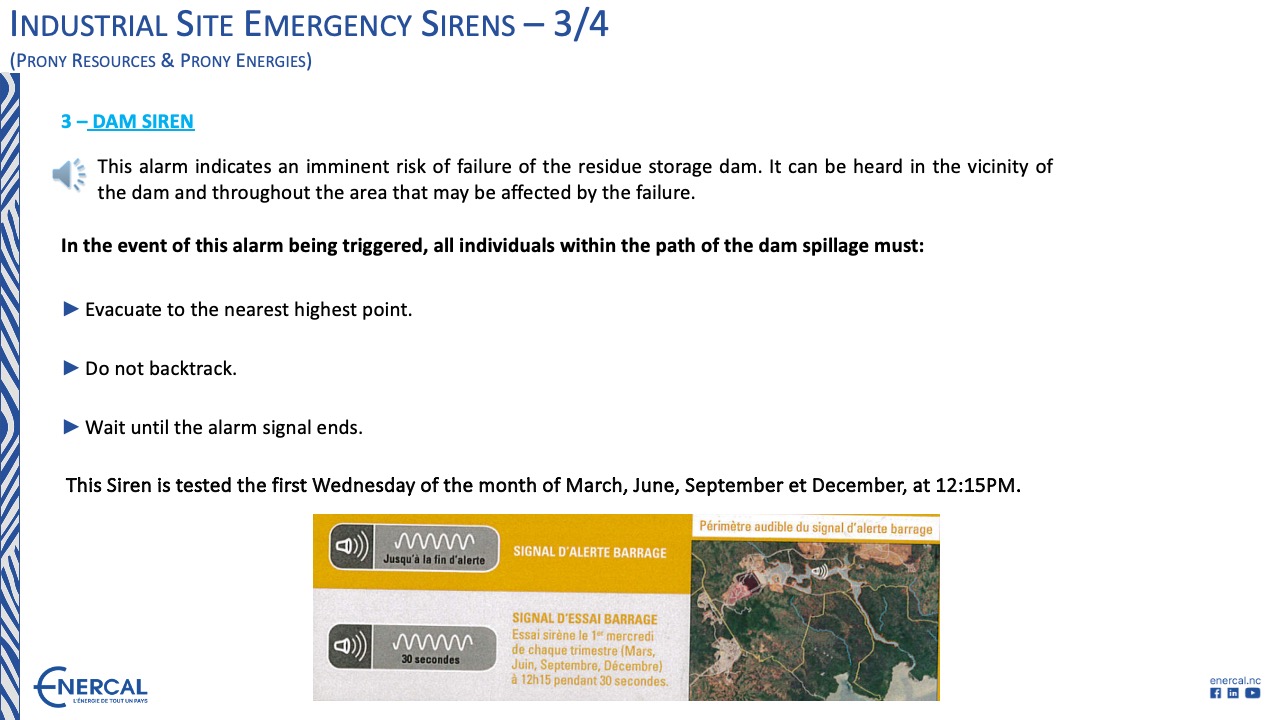
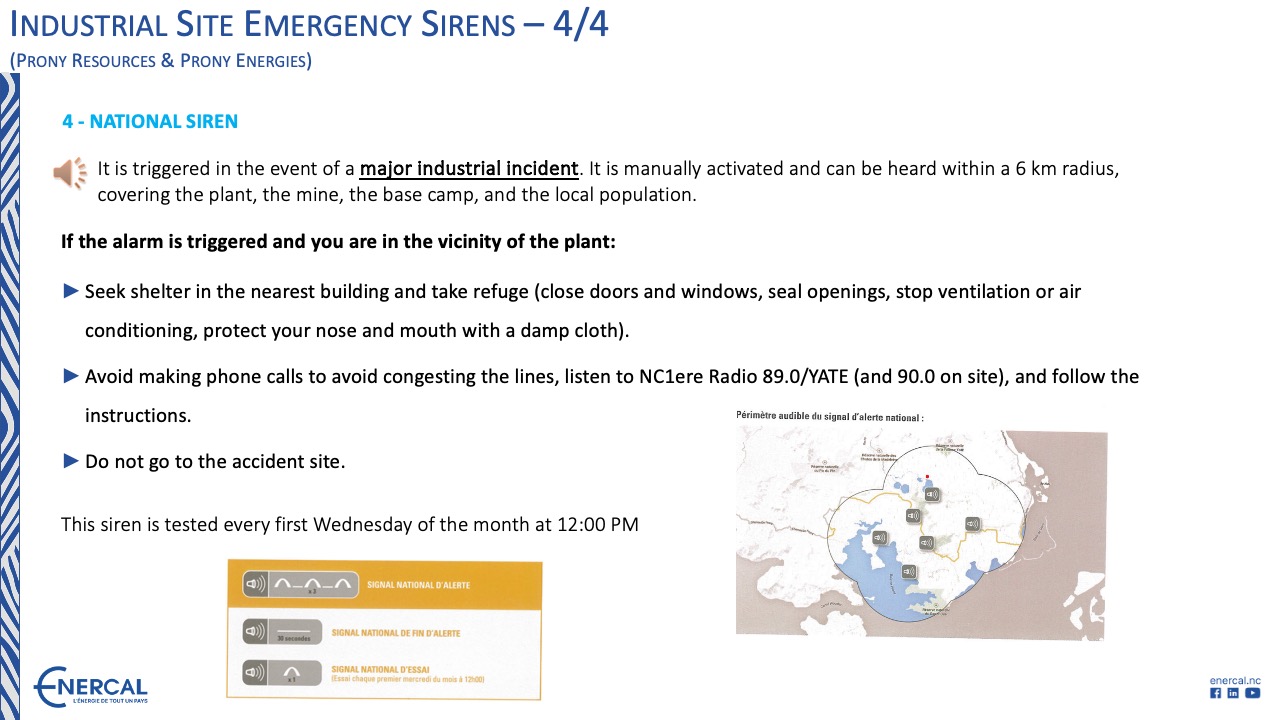
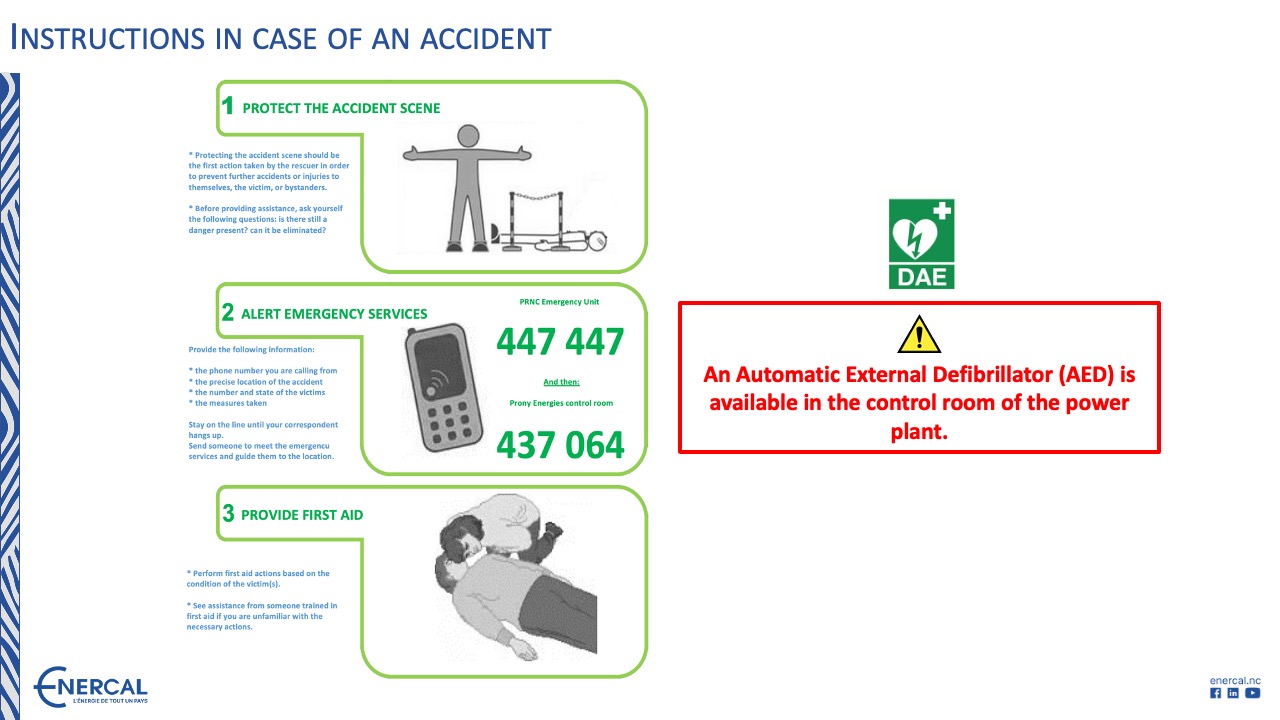
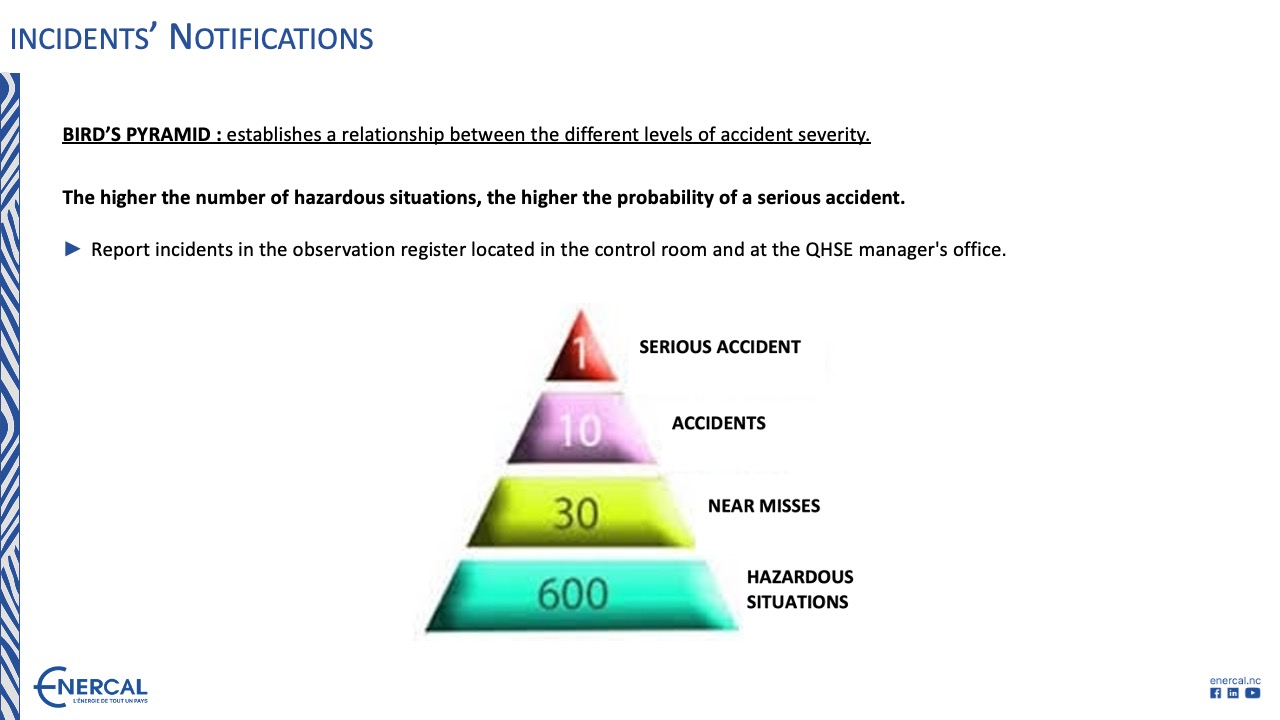
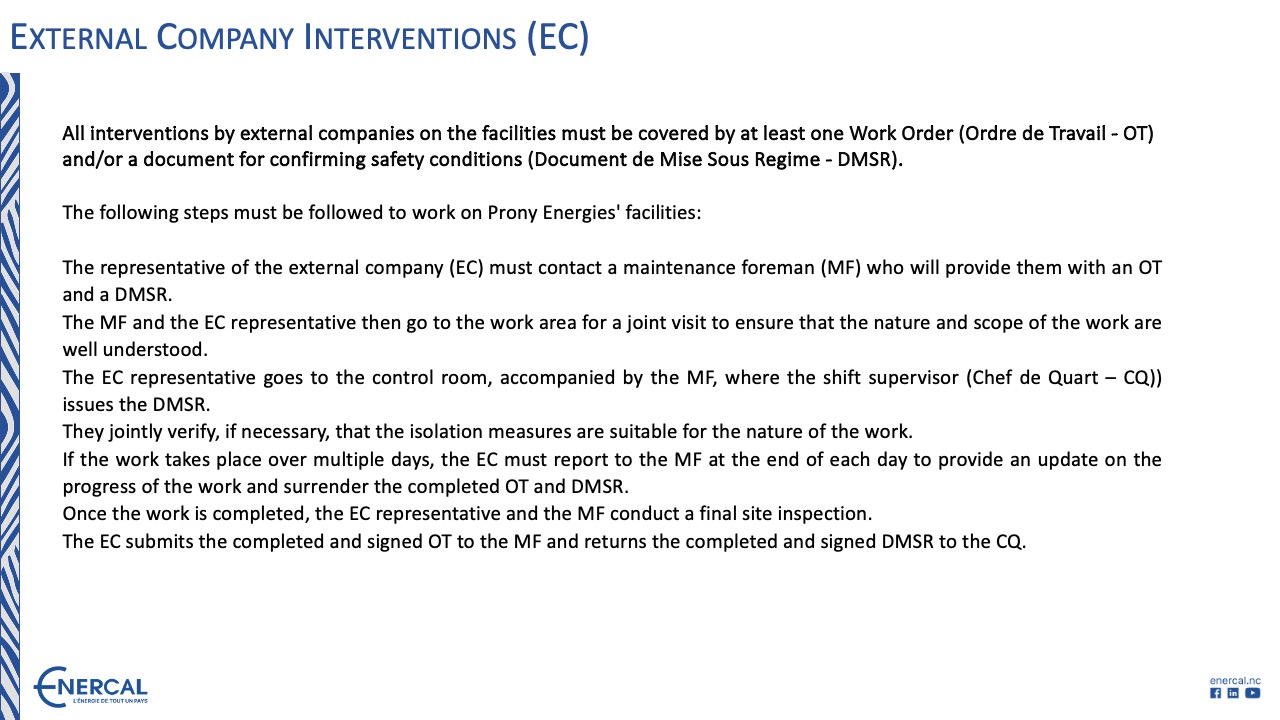
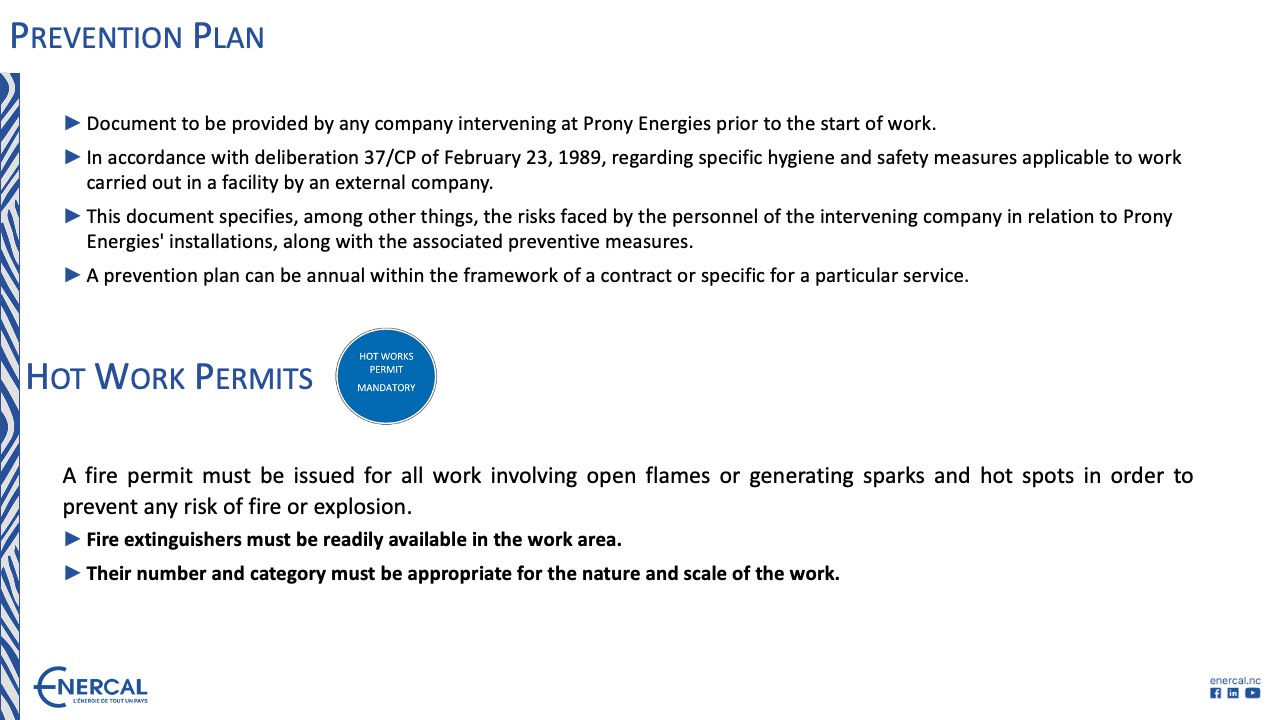
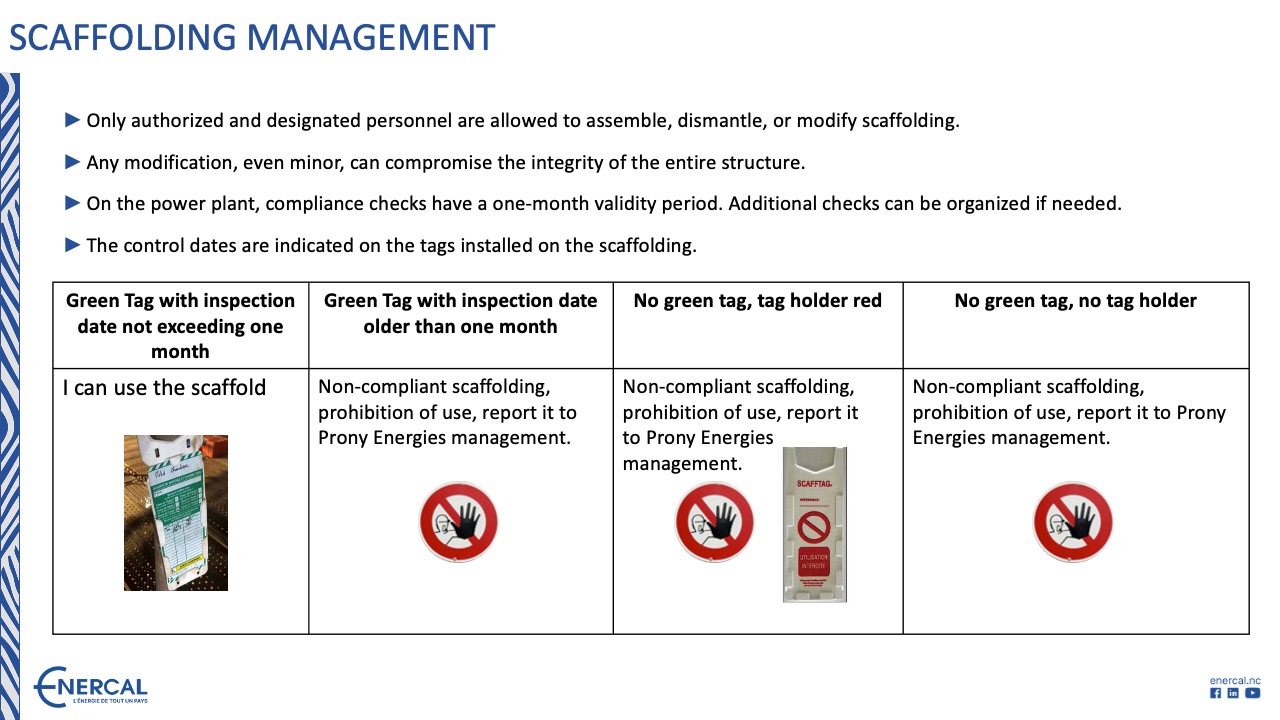
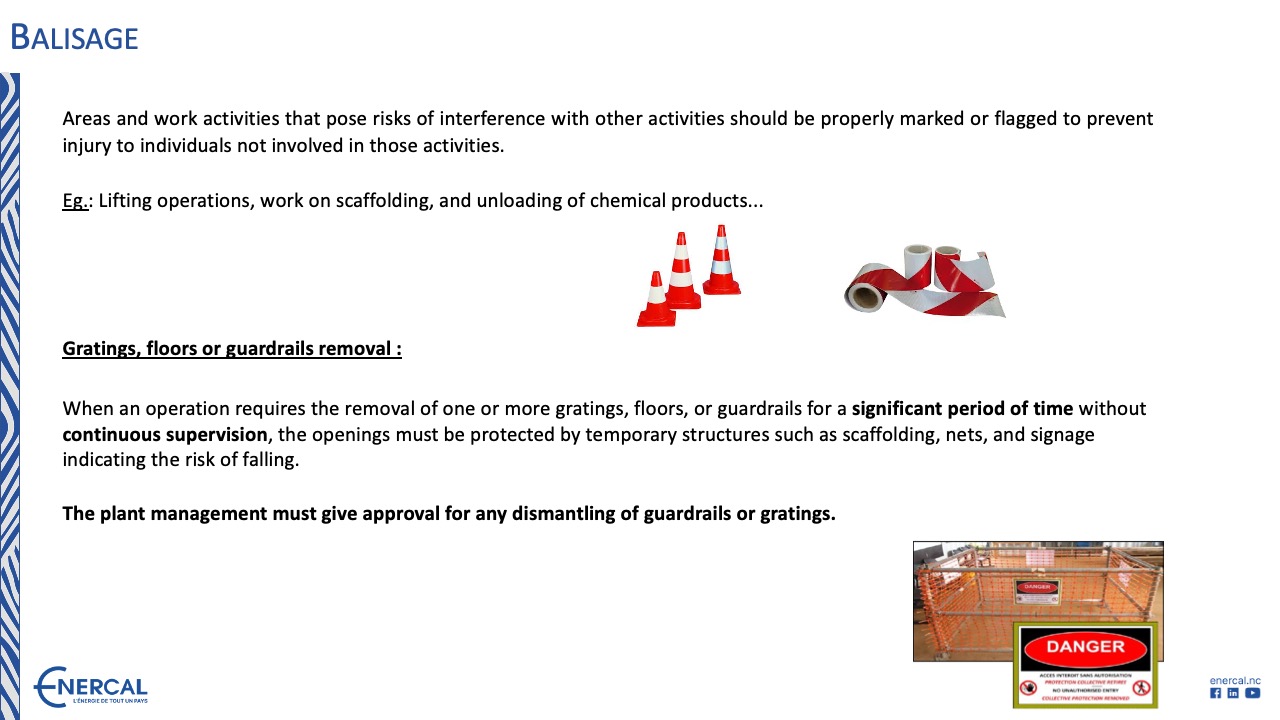
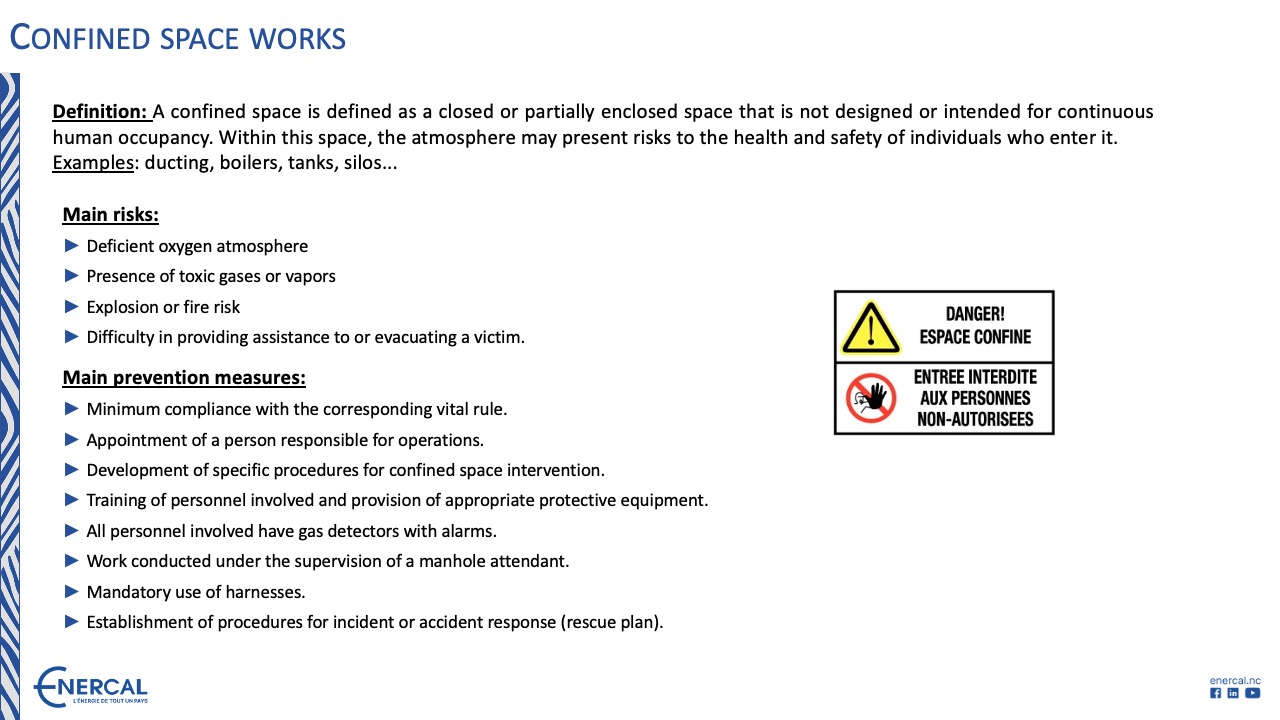
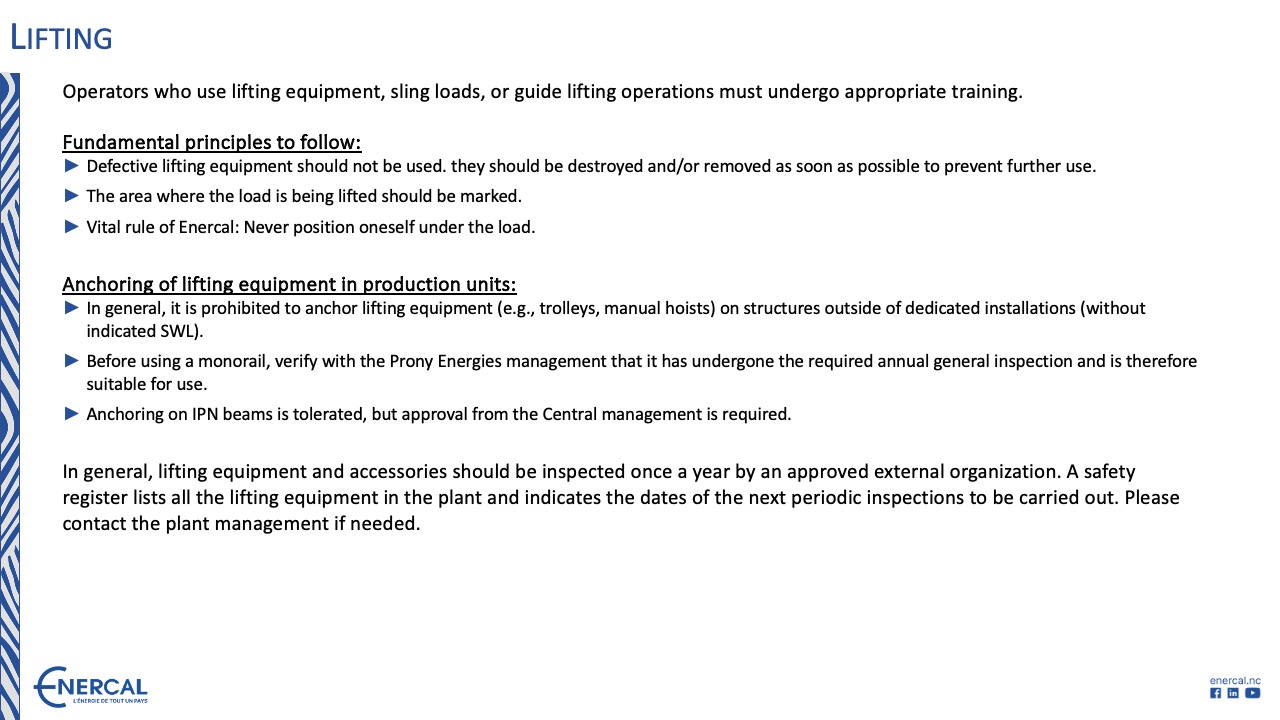
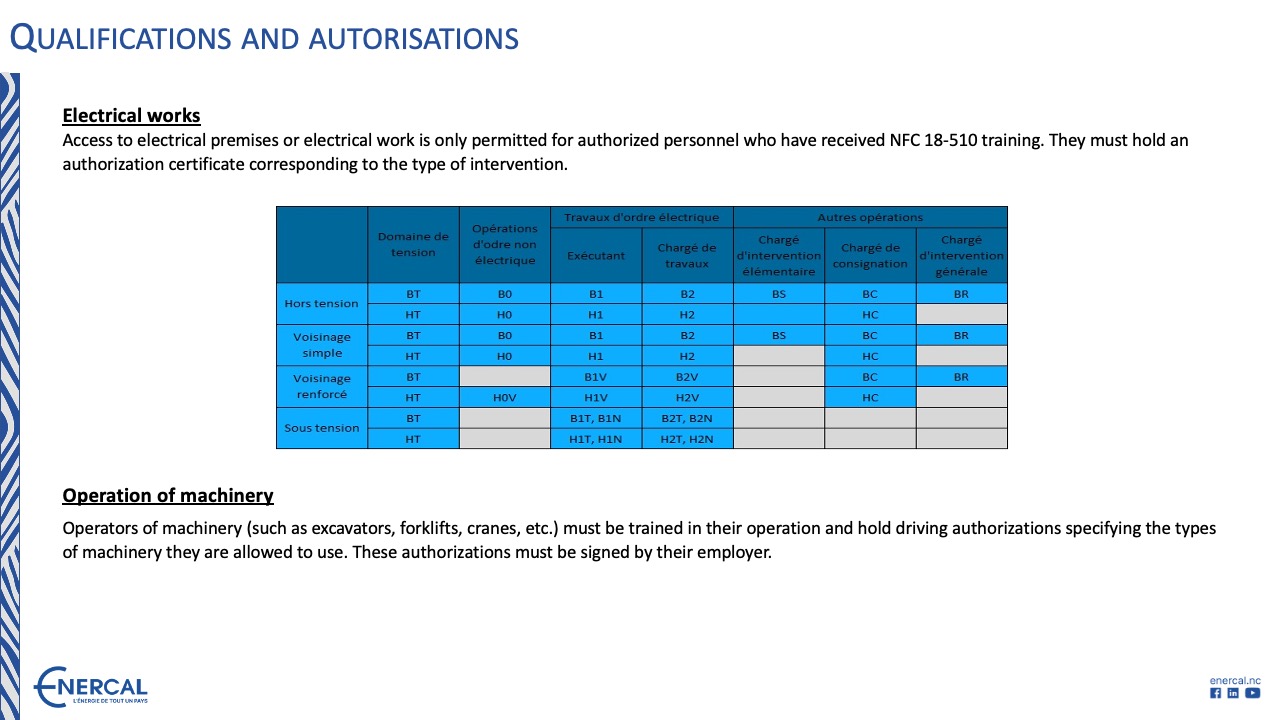
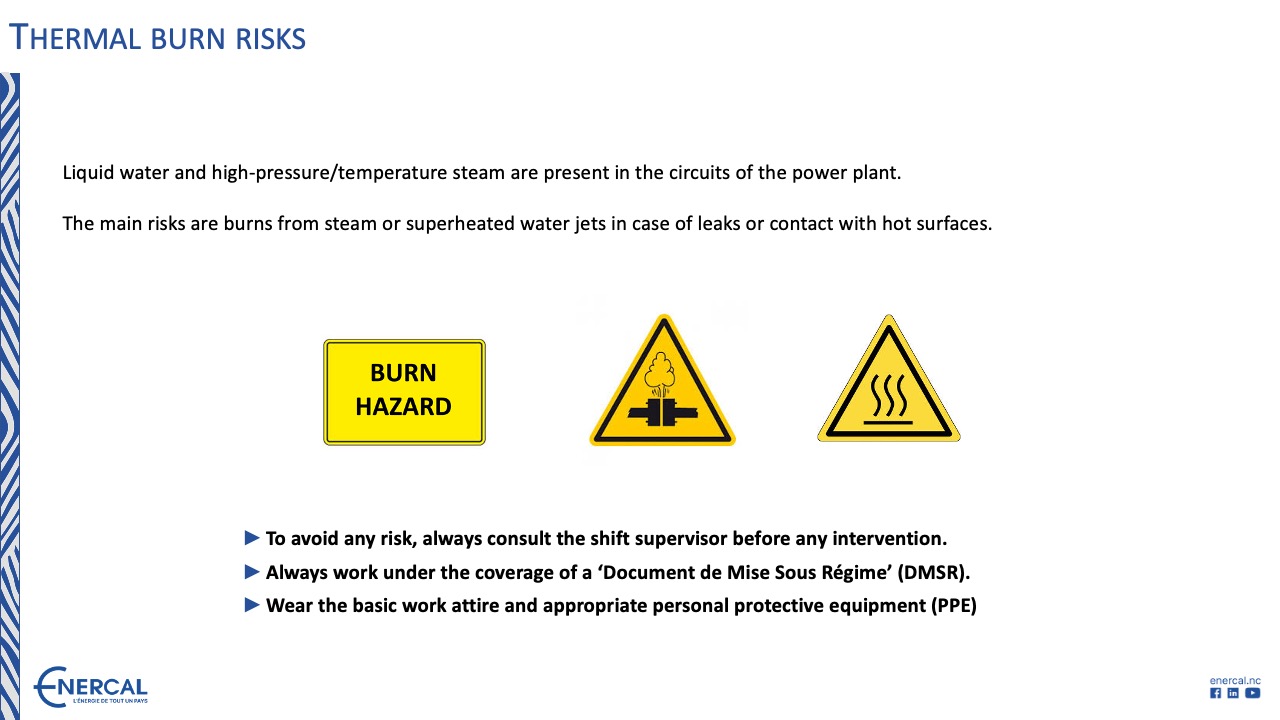
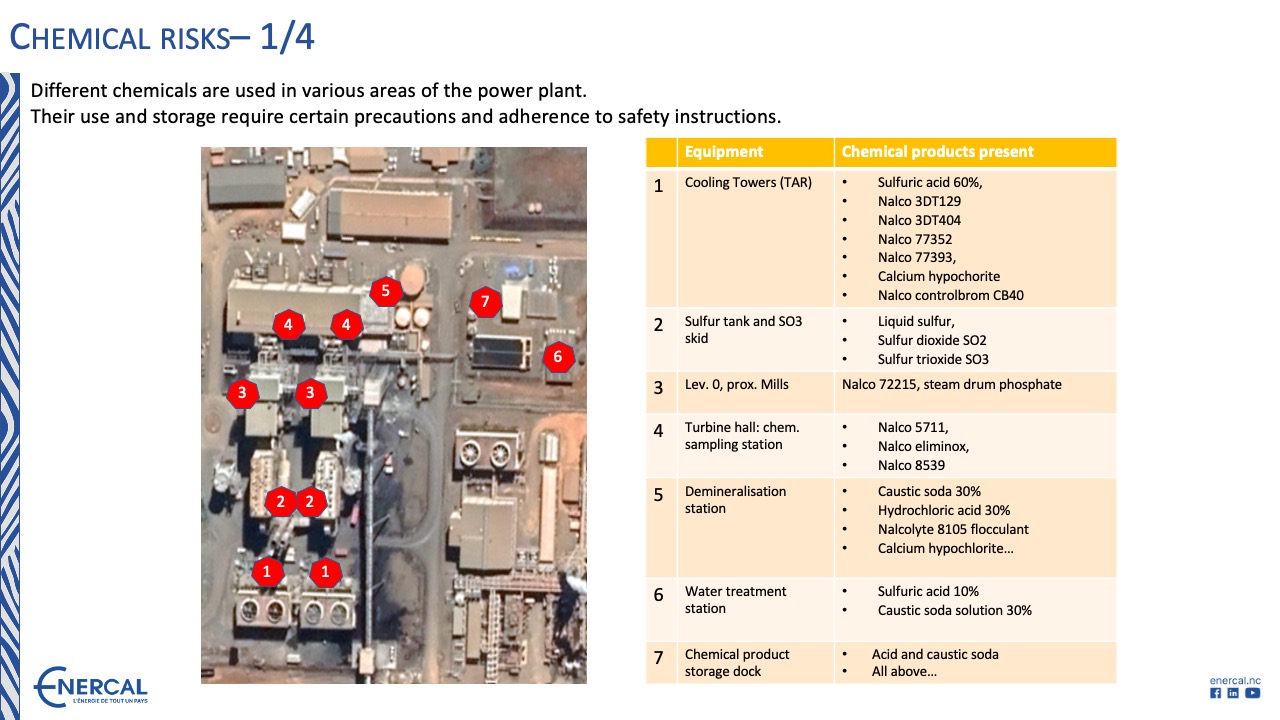
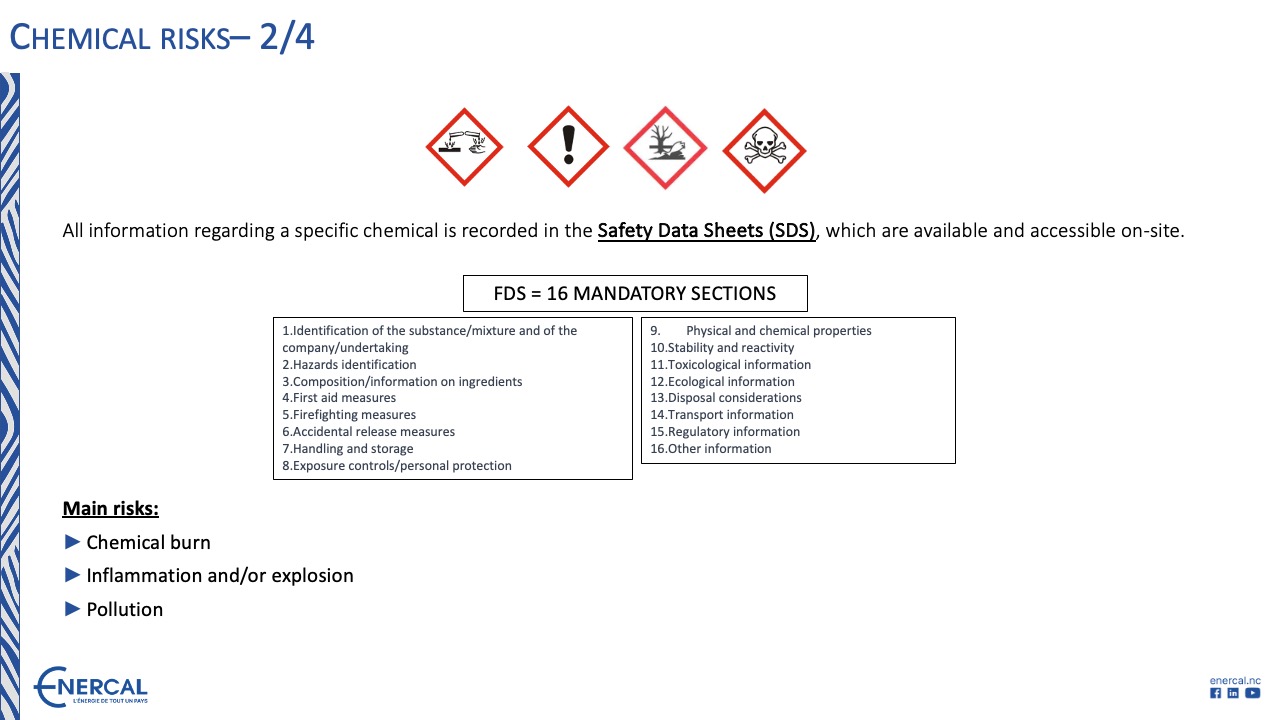
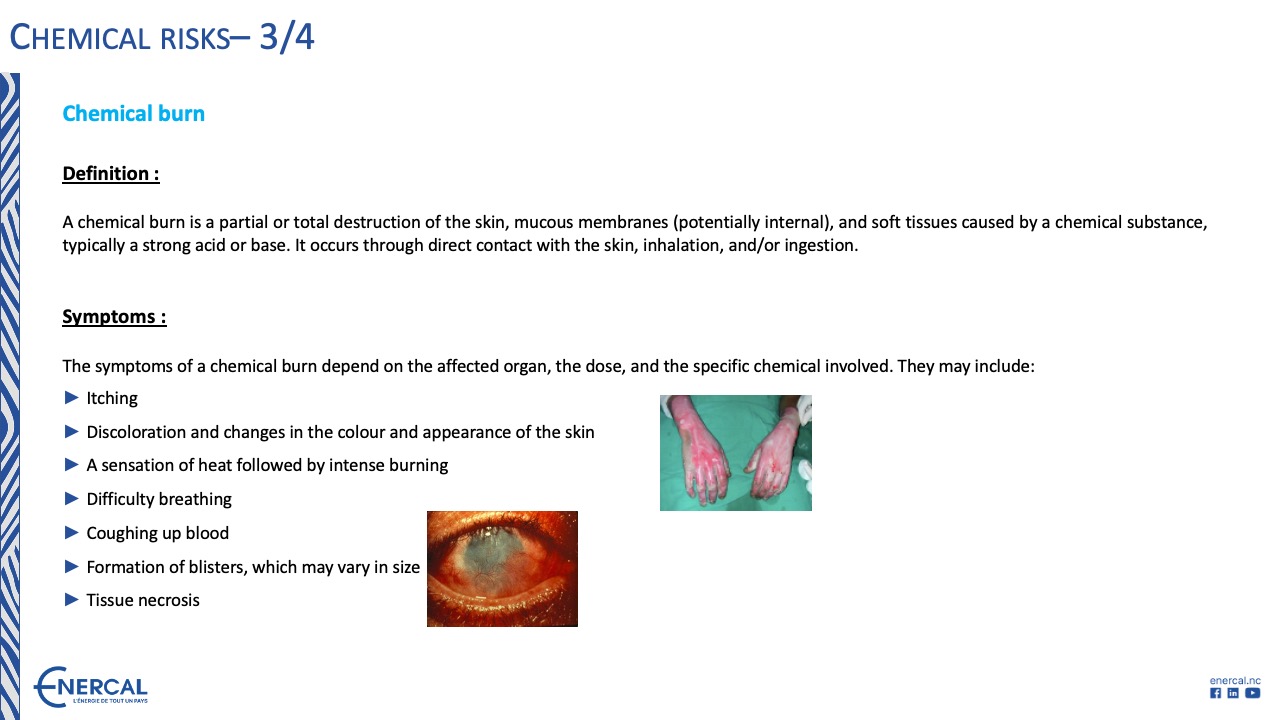
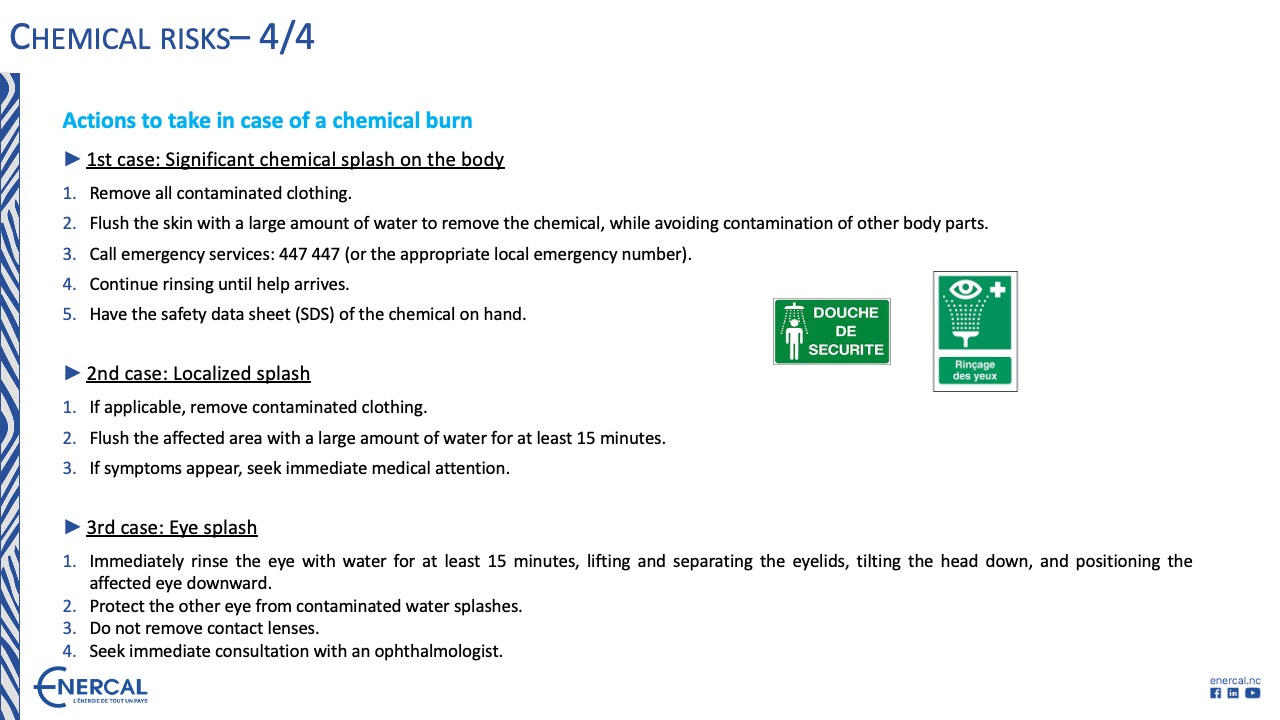
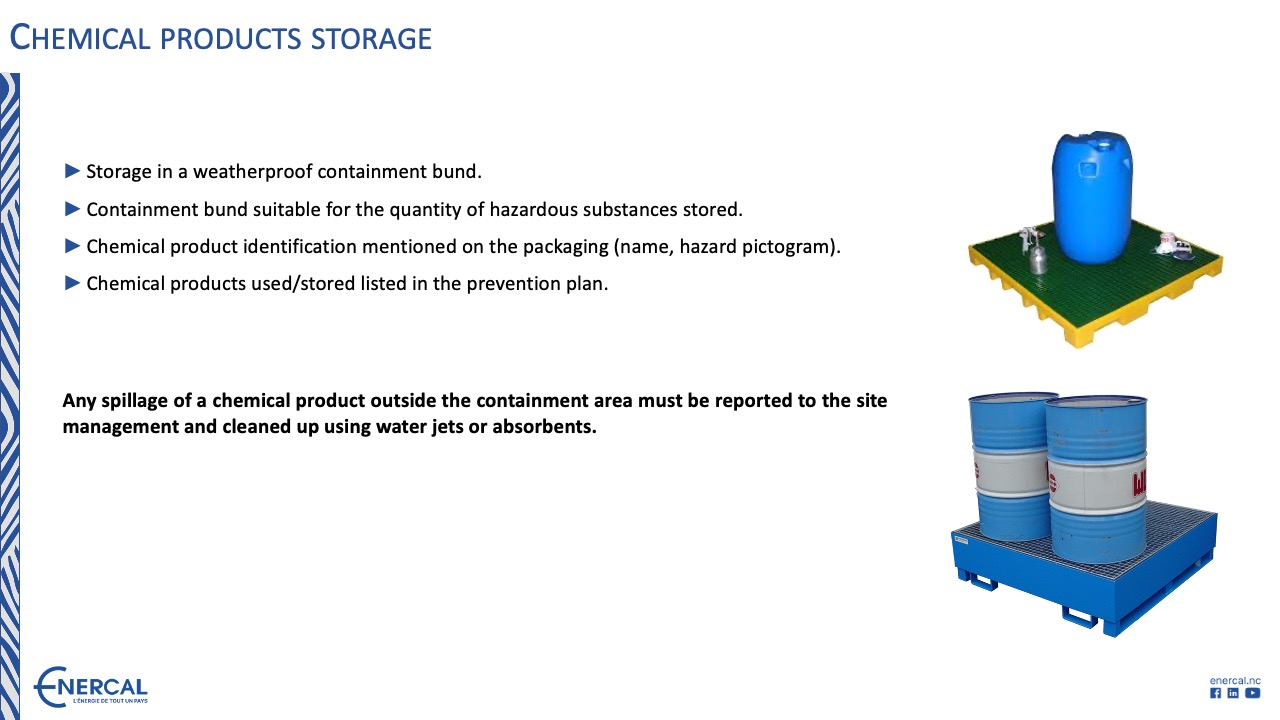
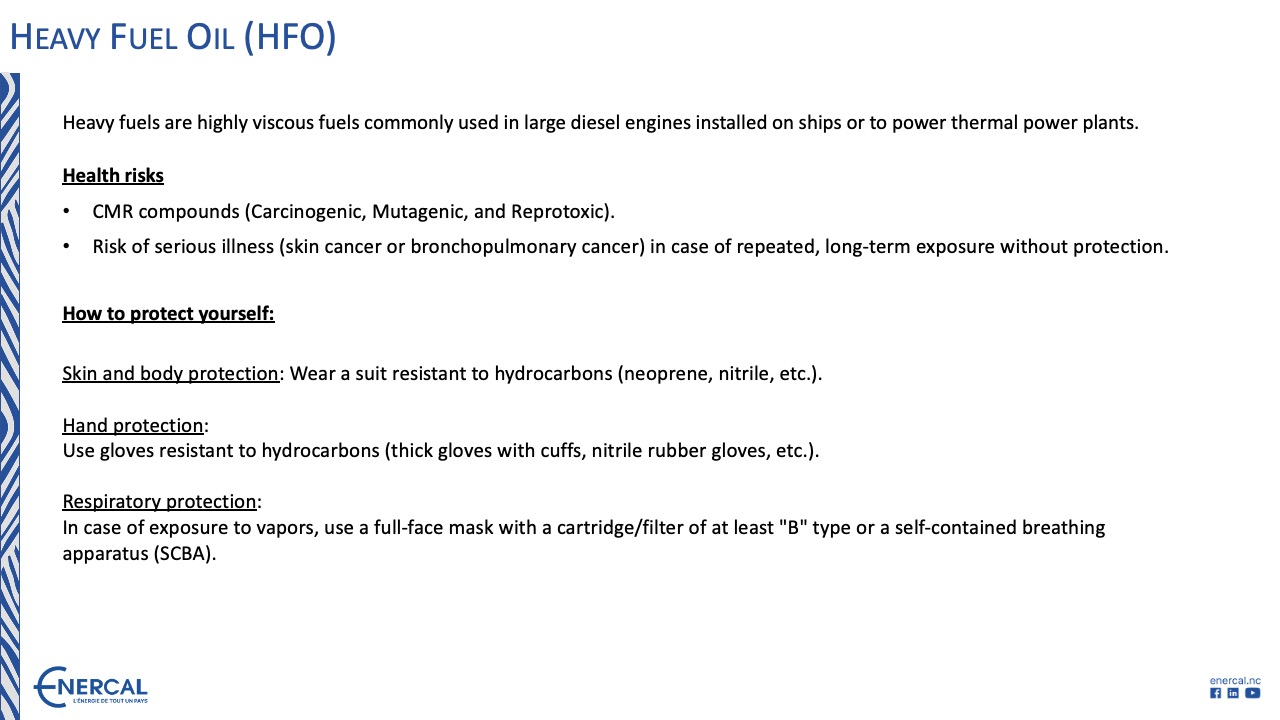
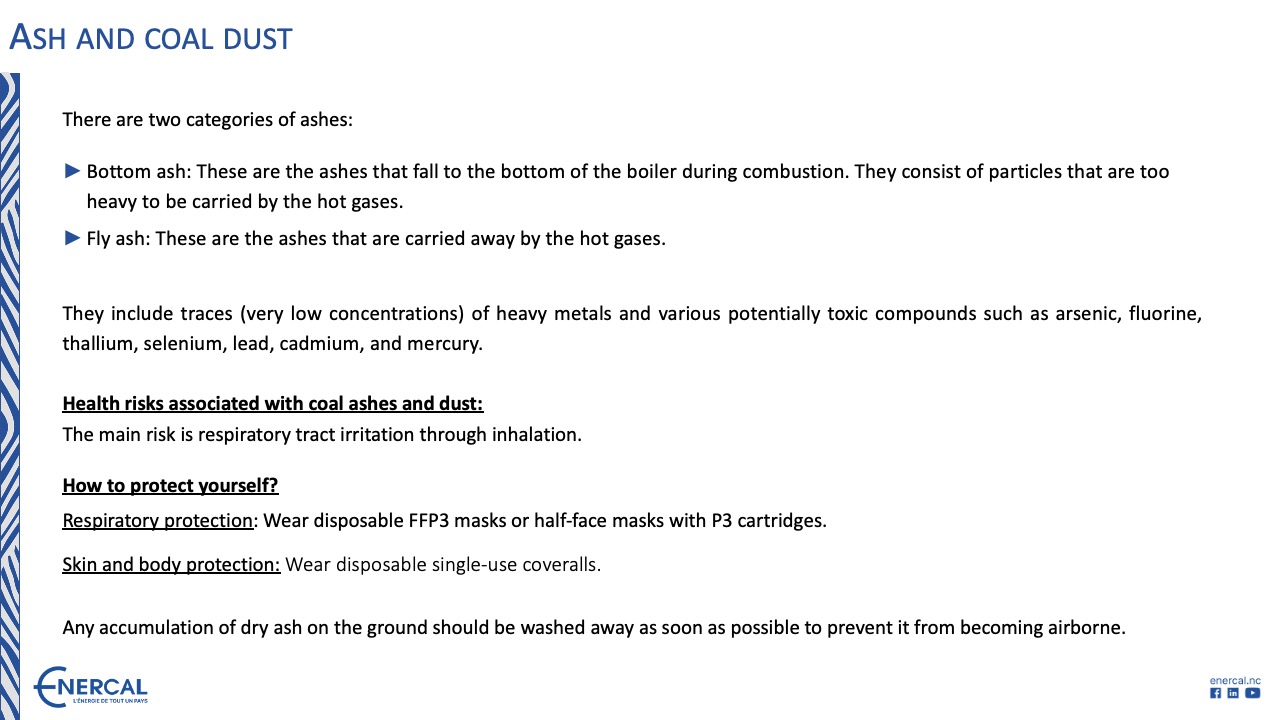
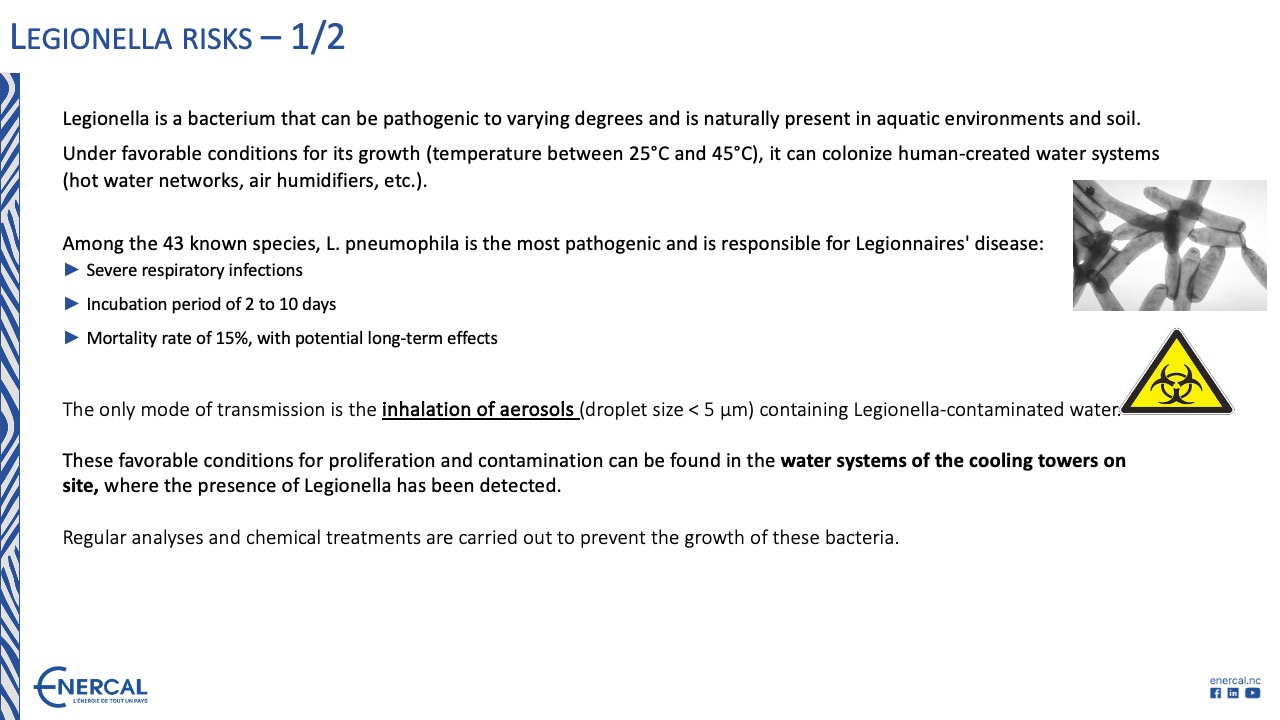
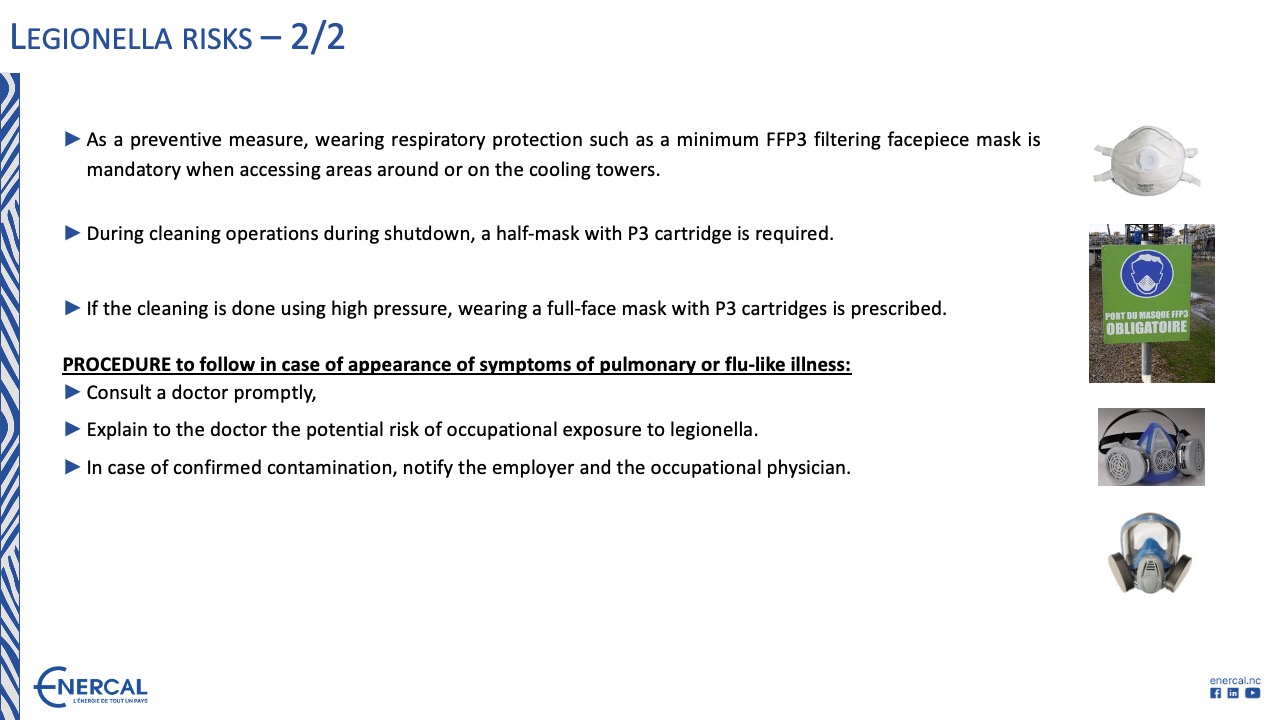
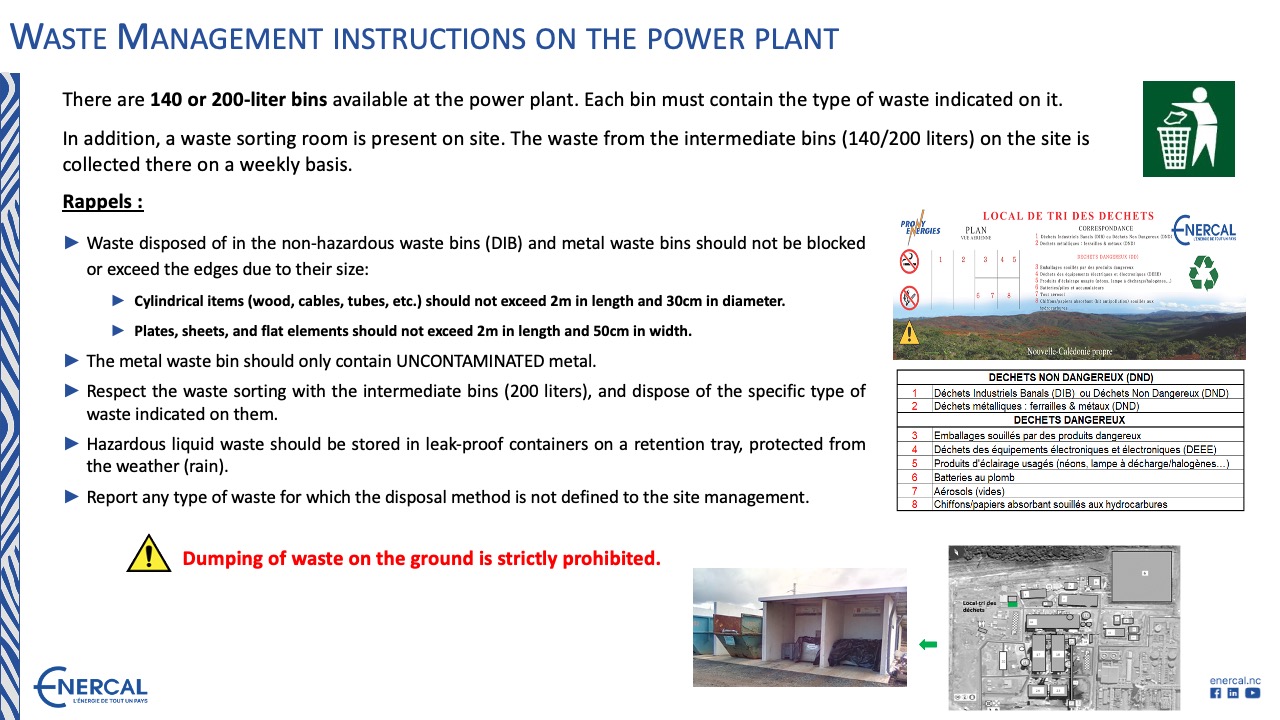
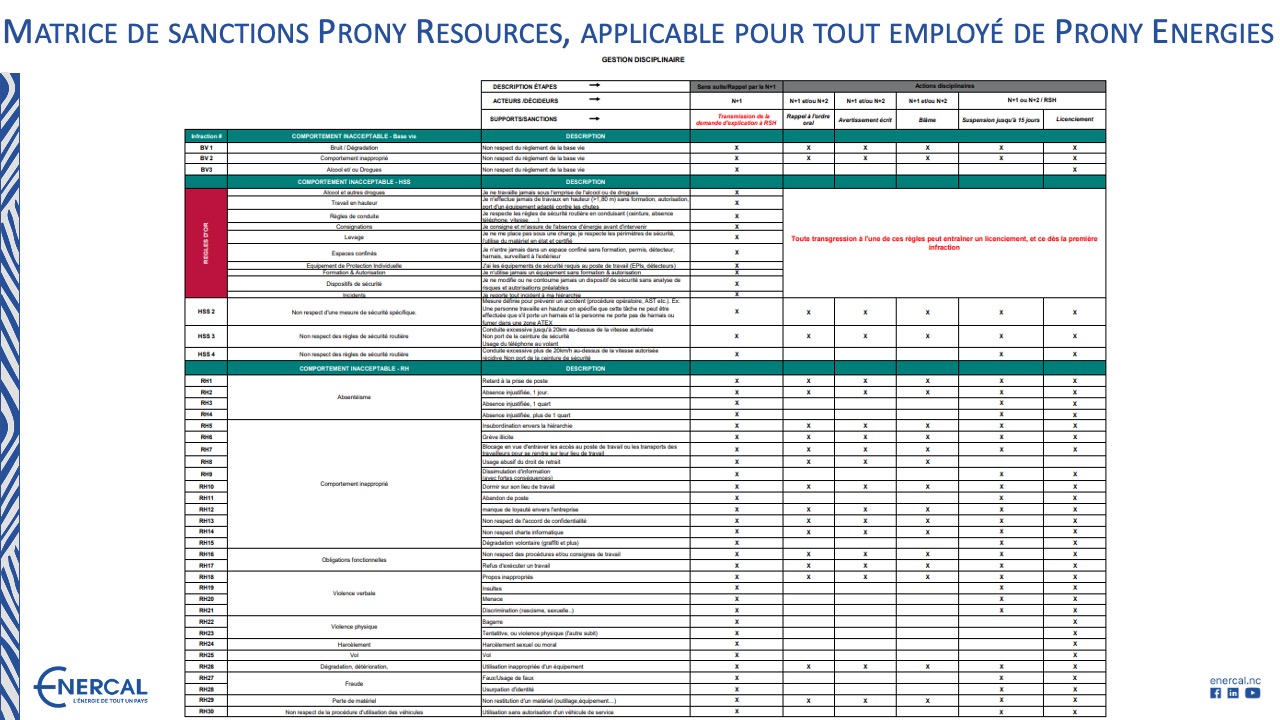
CMQ Quality Security Environment Induction :
Check the true statements
Check the true statements, several choices are possible per question.
At least 12 correct answers are required to validate the MCQ
1 / General Instructions
I am only allowed to smoke/vape in designated areas and I must dispose of my extinguished cigarette butts in ashtrays.
I may be subject to alcohol and/or drug testing at any time.
I must be familiar with and adhere to the 7 vital rules of Enercal implemented at the power plant. Any deviation may result in disciplinary action.
2 / Personal Protective Equipment (PPE)
If I am a visitor, I do not need to wear PPE.
The minimum PPE required depending on the areas of the power plant I need to access is indicated in the PPE mapping of the power plant.
I should always have my mask or evacuation hood readily available in case of need.
Failure to comply with the minimum PPE mapping is a reason for disciplinary action for any employee working at the power plant.
3 / I witness a serious workplace accident
I secure the accident site to protect the injured person or prevent further accidents, then I alert the intervention brigade at 447 447 and the control room at 437 064, and finally, I provide assistance to the victim if I have received appropriate training (First Aid).
An automated external defibrillator is available in the control room.
4 / In case of fire
I notify the control room supervisor via radio or telephone at 437 064. If the fire is not too large, I intervene using a fire extinguisher. If I am unable to quickly control the fire, I evacuate to the assembly point.
If I hear the fire alarm, I proceed to the designated assembly point.
5 / In case of general site evacuation
Assuming it is a false alarm or an exercise, I continue with what I was doing until someone informs me to evacuate.
I calmly proceed to the nearest and safest evacuation point, indicated by a blue sign and a letter.
If there is a cloud or toxic smoke, I put on my evacuation mask to reach the evacuation point.
6 / Intervening Contractor (IE)
Every intervention requires a work order (OT) and a shutdown document (DMSR).
The description and explanation of the work is done only at the foreman's office.
The foreman and the representative of the contractor go to the site to describe and explain the intervention.
At the end of the work, there is a joint inspection to verify the completion of the work.
7 / Hot work
Numerous combustible materials are present, sometimes in significant quantities. Tools that generate open flames can potentially cause a major fire.
A hot work permit must be issued for all work involving open flames.
8 / Chemical risk
Several highly dangerous chemicals are used at the power plant, such as hydrochloric acid and sulfuric acid.
If I get splashed with a chemical, I remove my contaminated clothing and rinse myself under a safety shower for at least 15 minutes. I inform or have someone inform emergency services at 447 447.
There is a Safety Data Sheet (SDS) for each chemical. This document contains all the information about the hazards, risks, and associated protective measures.
9 / Ashes, coal, and Heavy Fuel Oil (HFO)
Heavy Fuel Oil is classified as CMR (carcinogenic, mutagenic, and reprotoxic). Prolonged, repeated exposure to it without proper protection can lead to illness.
When working with fuel oil, I wear gloves and appropriate protective clothing. If the fuel is hot and emits vapours, I use respiratory protection.
Coal dust and ashes are natural substances and do not pose risks to health.
10 / Authorizations and permits
Operating machinery requires specific training and a driving permit issued and signed by the employer.
Access to electrical rooms and electrical interventions/work require corresponding electrical training (NFC18510) and an electrical authorization certificate signed by the employer.
11 / Work area demarcation
It is unnecessary to mark my work area if I do not see anyone in that zone when I start working.
Work areas and activities that present risks of interference with other activities must be demarcated to prevent injury to individuals not involved in the work.
12 / Lifting operations
I mark the lifting area.
I can attach hoists or other lifting devices anywhere in the power plant.
Lifting equipment and accessories are subject to periodic inspections according to regulations.
13 / Legionella risk
Water circuits in cooling towers may contain bacteria dangerous to health called Legionella.
Contamination occurs through inhalation of water particles in aerosols.
When moving in the cooling tower area, I wear at least an FFP3 type paper mask.
If I have worked in the cooling tower area and develop flu-like symptoms, I immediately consult a doctor and inform them that I may have been exposed to Legionella.
14 / Storage of chemical products
I can store my chemical cans and drums directly on the floor. There is no risk of leaks.
I place my cans and drums on containment systems suitably sized, protected from the weather.
15 / Waste management
I put all the waste in the same bin.
Waste is sorted to facilitate recycling and disposal at appropriate sorting centers. I need to consult the waste management instructions provided by the power plant to place them correctly.
If the bins are full, I can leave my waste on the ground, as it does not pose any problems.


